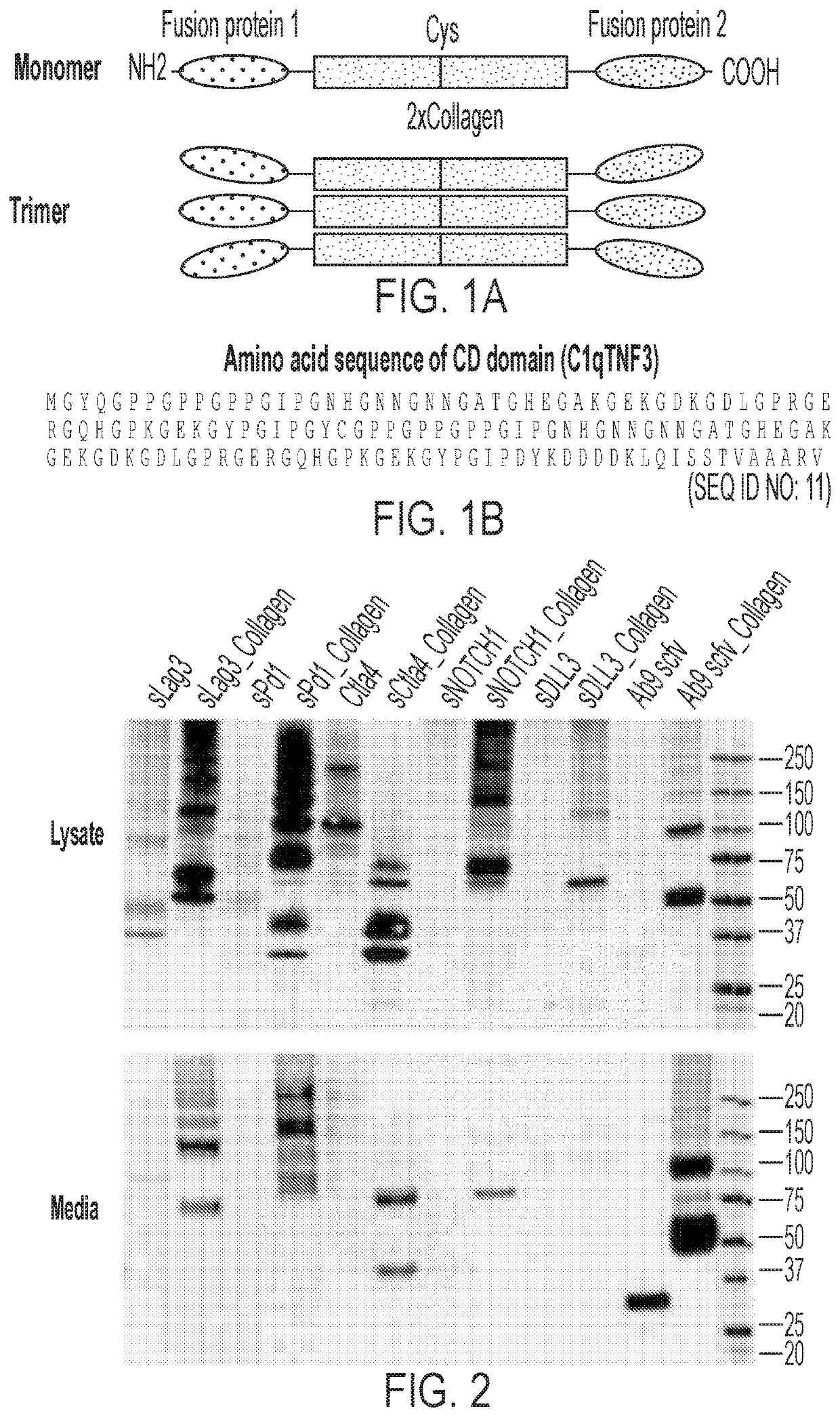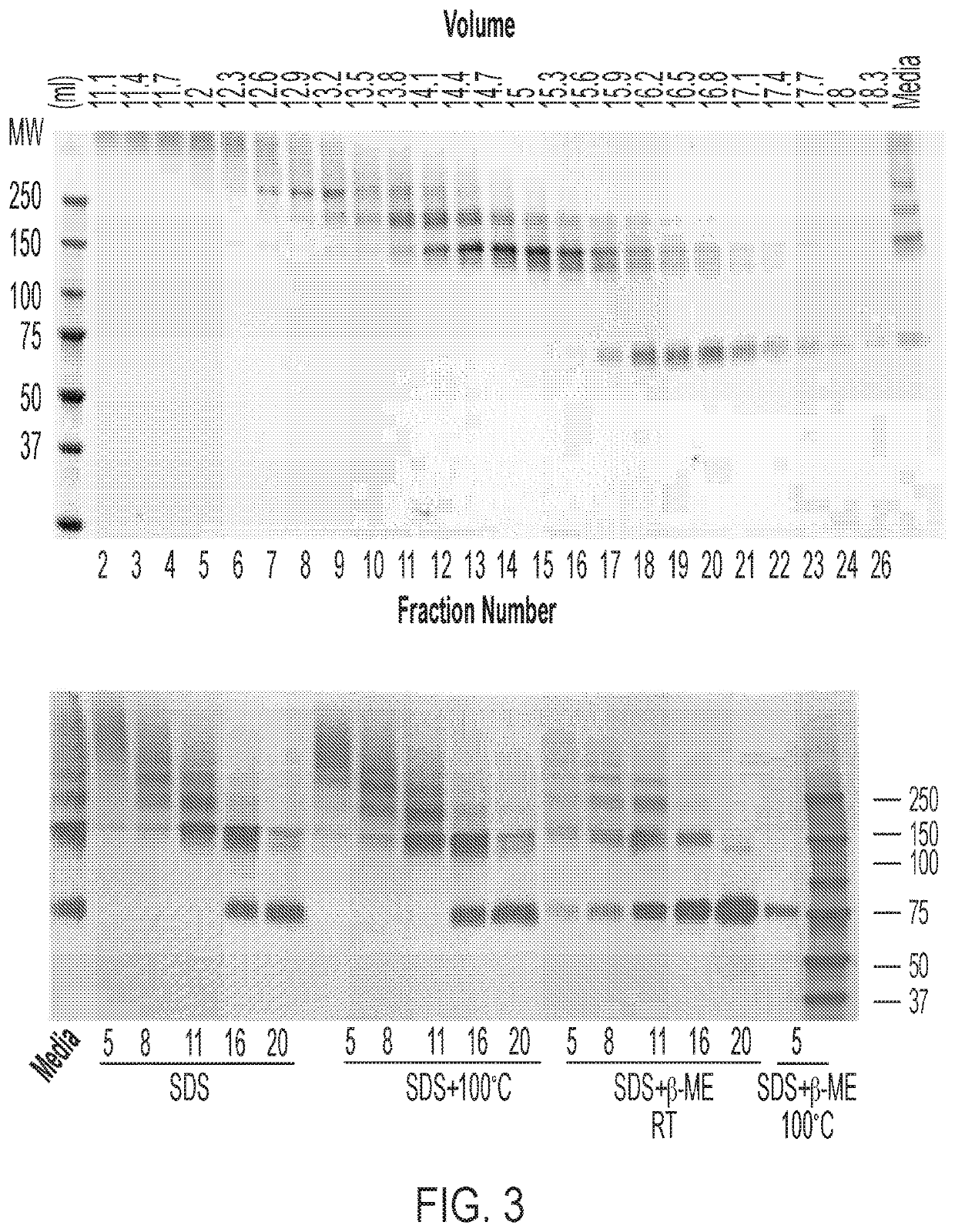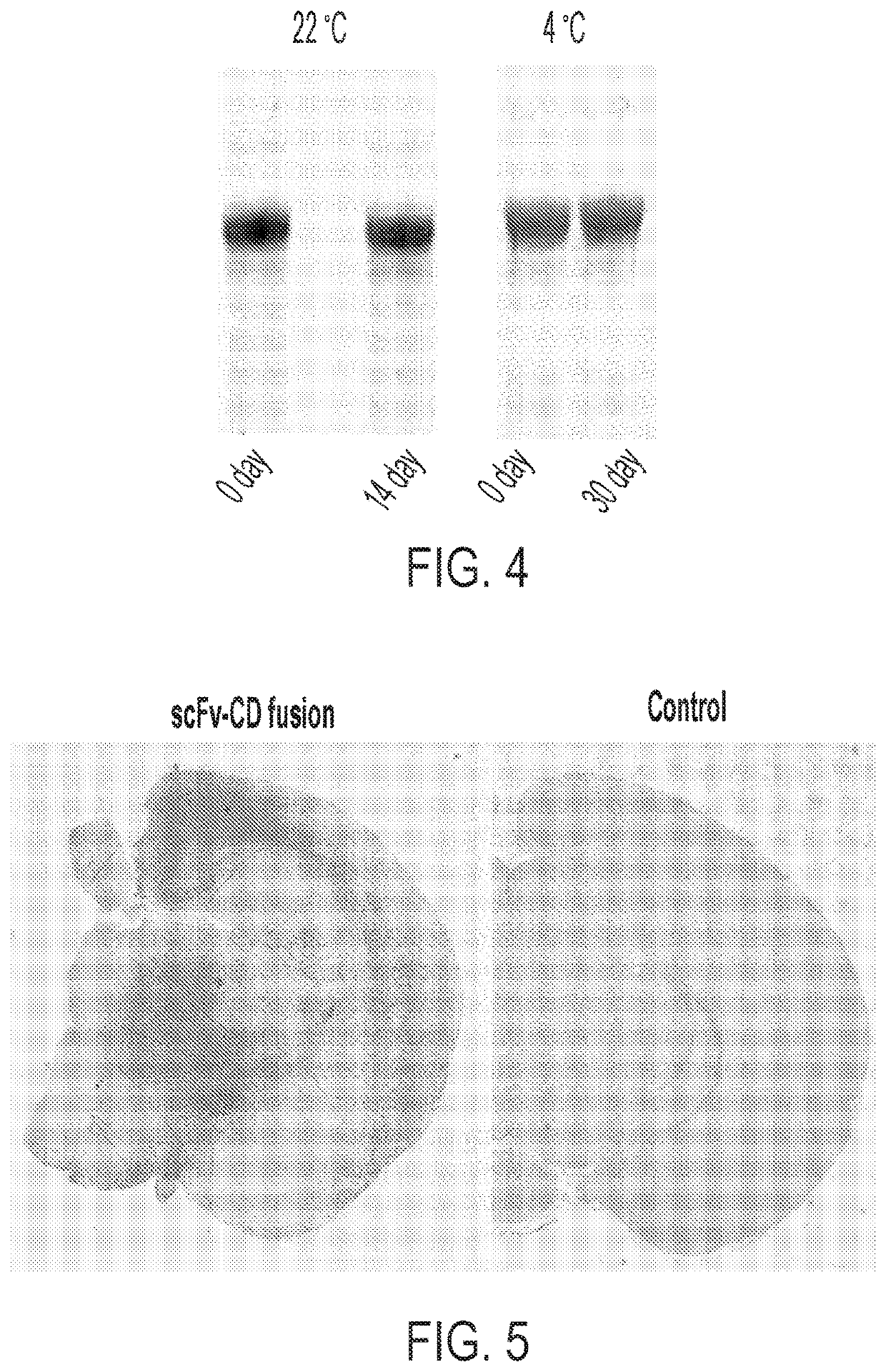Multimeric protein domains for multifunctionality and enhanced secretion of therapeutic proteins
a multifunctional protein and multi-functional technology, applied in the direction of peptides, polypeptides with his-tags, enzymology, etc., can solve the problems of limited expression efficiency, short half-life of cells, and low binding affinity of small peptides as exogenous gene delivery candidates
- Summary
- Abstract
- Description
- Claims
- Application Information
AI Technical Summary
Benefits of technology
Problems solved by technology
Method used
Image
Examples
example 1
ns Dramatically Increase Secretion of Fusion Protein
[0216]To identify an optimal C1QTNF family member for multimeric fusion experiments, CCD domains derived from two isotypes of the C1QTNF protein, i.e., C1QTNF3 and C1QTNF5 was tested. CCD from those two proteins were fused to soluble Lag3. Results show both CCD increased secretion of sLag3 (middle panel), but CCD from C1QTNF3 had much higher potency to increase multimerization (right panel) of sLag3. Results are shown in FIG. 22.
[0217]Many decoy peptides comprise truncated polypeptides and are often attacked by peptidases in vivo; thus they are often subject to low yields during use in a mammalian overexpression system. Plasmids encoding various CCD fusions with decoy heterologous peptides comprising extracellular (soluble) and intracellular peptides were designed for improved overexpression in the cell to overcome this deficiency. These peptides include soluble Lag3, soluble PD-1, CTLA4, NOTCH1, DLL3 and Aβ9 scFv (see FIG. 2). The...
example 2
n Proteins are Multimeric
[0224]An important parameter to evaluate a decoy protein is its ligand binding affinity. Avidity measures the total binding strength of a decoy protein or antibody. One effective method to enhance the avidity of a decoy or antibody is through multivalence engineering. As mentioned above, native collagen usually forms trimers through association of glycine repeat domains. Multimerization of CCD fusion proteins may enhance the avidities of the heterologous peptides.
[0225]To test the hypothesis that a multimerization (e.g. into trimers) of CCD fusion proteins in vivo may protect intracellular heterologous peptides from attack by endopeptidases, an rAAV nucleic acid vector encoding sLag3-CCD_FLAG was overexpressed in HEK 293T cells by PEI transfection as described above. Conditioned (or spent) cell media was collected. (The conditioned media contains the secreted CCD fusion proteins.) Following concentration to a suitable volume, media were loaded onto a PBS pre...
example 3
n Proteins have Long Stability and can be Expressed Efficiently in Mouse
[0229]The stability of a sB7H3-CCD fusion protein monomer was tested after storage for up to one month at room temperature and at 4° C. sB7H3-CCD was expressed in cells by delivery of an rAAV vector encoding this protein. Cells were lysed and protein was isolated and divided into aliquots. Protein purified from conditioned media was used for SDS-PAGE and Coomassie staining to visualize protein stability.
[0230]Protein samples were aliquots at −80° C. prior to stability analysis, and then suspended in PBS with 150 mM NaCl. SDS-PAGE and Western blot analyses were compared before and after storage, to determine if any protein bands appeared that indicated the presence of degradants.
[0231]As shown in FIG. 4, no significant change in blot image was observed after two weeks of storage at room temperature or after 30 days of storage at 4° C., indicating an absence of degradants. This results suggests that the CCD fusion...
PUM
| Property | Measurement | Unit |
|---|---|---|
| Fraction | aaaaa | aaaaa |
| Fraction | aaaaa | aaaaa |
| Fraction | aaaaa | aaaaa |
Abstract
Description
Claims
Application Information
 Login to View More
Login to View More - R&D
- Intellectual Property
- Life Sciences
- Materials
- Tech Scout
- Unparalleled Data Quality
- Higher Quality Content
- 60% Fewer Hallucinations
Browse by: Latest US Patents, China's latest patents, Technical Efficacy Thesaurus, Application Domain, Technology Topic, Popular Technical Reports.
© 2025 PatSnap. All rights reserved.Legal|Privacy policy|Modern Slavery Act Transparency Statement|Sitemap|About US| Contact US: help@patsnap.com



